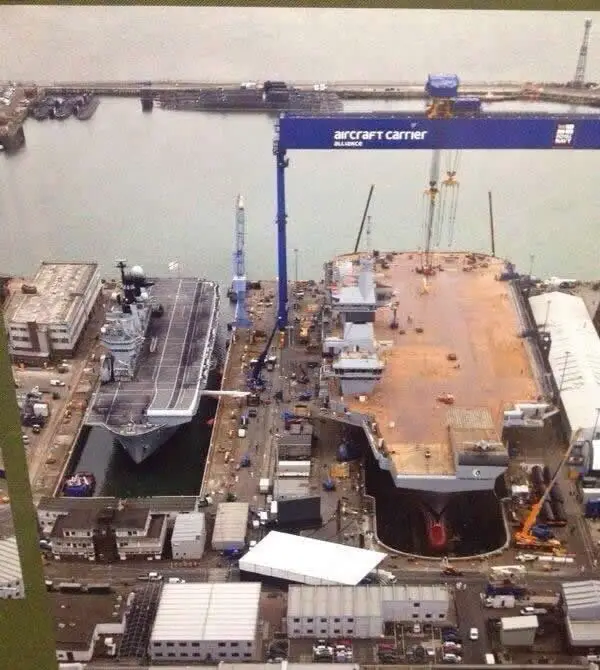Breaking news
HMS Queen Elizabeth Aircraft Carrier, future flagship of the Royal Navy fleet, nammed by the Queen.
|
|||
Thousands more people involved in the design and construction
of the Queen Elizabeth aircraft carriers joined in the celebrations at
15 sites across the UK. From Bristol, Appledore and Portsmouth to Derby,
Tyneside and Glasgow, local politicians, school children, veterans and
Royal Navy personnel joined employees to watch events relayed live on
giant screens.
As the Queen Elizabeth Class aircraft carrier programme has involved every region of the UK, landmarks across the country are lighting up Royal blue to join the celebrations in recognition of their city’s involvement in creating this magnificent ship, including Edinburgh Castle and the Spinnaker Tower in her future home port of Portsmouth. The naming ceremony for HMS QUEEN ELIZABETH marks the structural completion of the 65,000 tonne aircraft carrier. She will be floated out of the dock later this month and berthed in the basin, where teams will continue to outfit the ship and steadily bring her systems to life in preparation for sea trials in 2016. Meanwhile, teams across the UK are continuing the construction of her sister ship HMS PRINCE OF WALES. The bow section has already arrived at Rosyth and the first major hull section will be delivered from Glasgow at the end of July. Final assembly of HMS PRINCE OF WALES will begin in September in the dock vacated by HMS QUEEN ELIZABETH. The aircraft carriers HMS QUEEN ELIZABETH and HMS PRINCE OF WALES are being delivered by the Aircraft Carrier Alliance, a unique partnering relationship between BAE Systems, Thales UK, Babcock and the Ministry of Defence. The Queen Elizabeth Class will be the centrepiece of Britain’s defence capability for the 21st century. Each 65,000-tonne aircraft carrier will provide the armed forces with a four-acre military operating base, which can travel up to 500 miles per day to be deployed anywhere around the world. Operating the Joint Strike Fighter Lightning II jets and a number of types of helicopter, the QE Class will be versatile enough to be used across the full spectrum of military activity from warfighting to providing humanitarian aid and disaster relief. |
|||





















